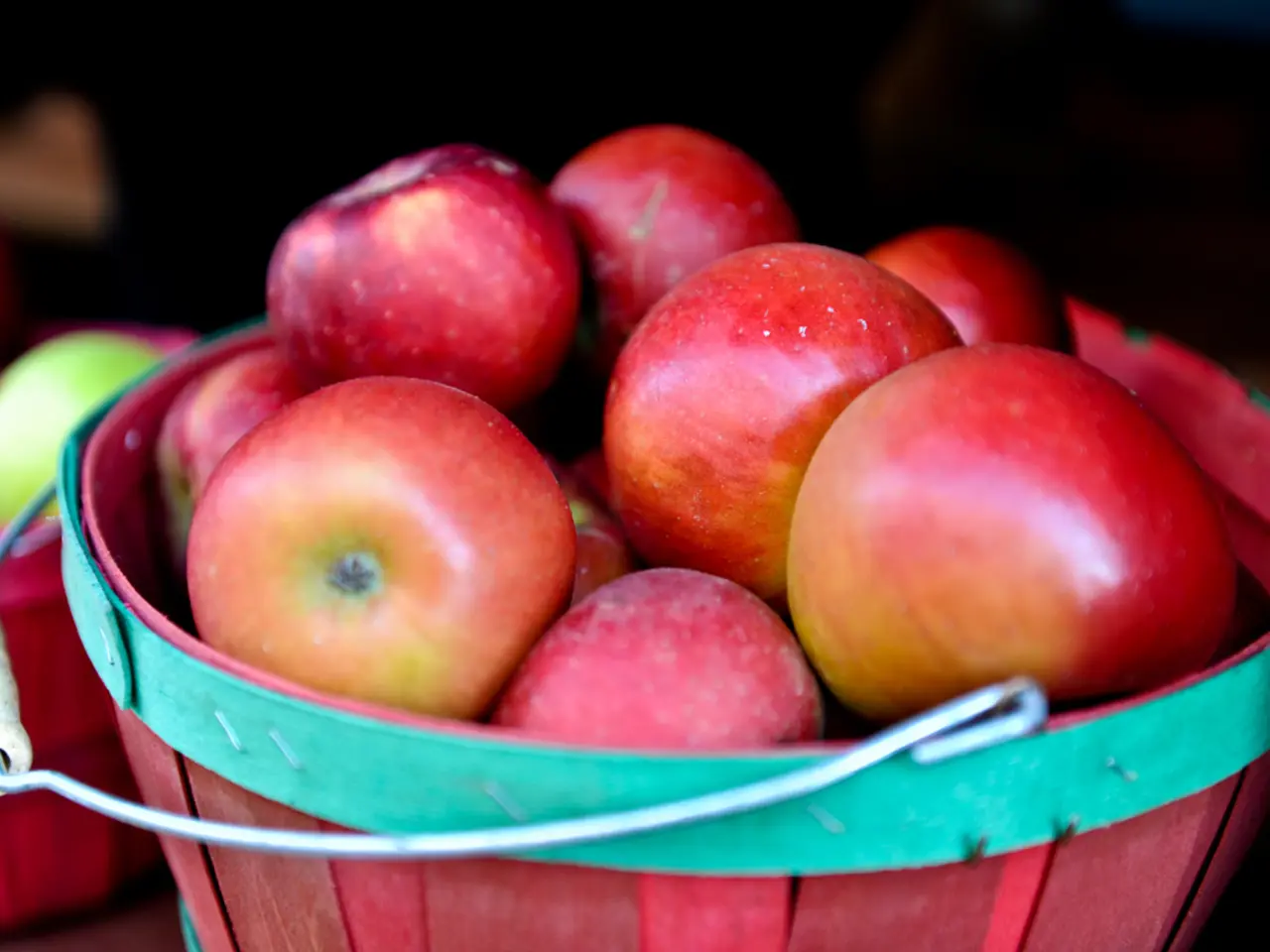Fungal Infestation Affects Apple Produce
=====================================================================
Powdery mildew is a common fungal disease that affects apple trees, causing damage to buds, blossoms, leaves, twigs, and fruit. The disease is caused by the fungus Podosphaera leucotricha, and secondary infections produce the overwintering infected buds.
Under optimum conditions, powdery mildew can be visible to the naked eye as early as 48 hours after infection, with a new crop of spores produced about five days after infection. The symptoms of the disease first appear in the spring on the lower surface of leaves, usually at the ends of branches. Infected leaves and blossoms may shrivel and produce no fruit.
To reduce the chances of powdery mildew, planting apple trees in sunny locations with good air drainage is recommended. Infected terminals may have a silvery gray color, stunted growth, and a misshapen appearance and are more susceptible to winter kill.
Effective methods to control powdery mildew on apple trees include cultural practices, organic treatments, and chemical fungicides.
Cultural practices involve planting apple trees in sunny locations with good air circulation and pruning to enhance airflow and light penetration into the canopy. Removing and shredding fallen leaves can also help reduce inoculum sources, and avoiding wetting leaves unnecessarily can prevent the growth of powdery mildew spores.
Organic treatments include weekly foliar sprays with a diluted vinegar solution or milk sprays, which can suppress powdery mildew by creating hostile leaf surface conditions and washing away spores. These treatments are preventative and manageable for home gardens.
Chemical fungicides are also effective in controlling powdery mildew, particularly in commercial plantings. Early spring applications starting at the tight cluster stage are important to prevent initial infections. Fungicides such as ipflufenoquin (Migiwa 20 SC) and impyrfluxam (Excalia Fungicide) can control powdery mildew when applied according to recommended dosages and timings. Other fungicides with proven efficacy include single-site fungicides effective against powdery mildew and other fungal diseases.
The most susceptible apple varieties to powdery mildew are generally those lacking genetic resistance. Selecting scab- and mildew-resistant apple varieties is recommended to reduce disease pressure. Specific cultivar susceptibility is not detailed in the search results, but varieties without resistance bred against powdery mildew tend to be more vulnerable.
An integrated management approach combining resistant varieties, good orchard sanitation and canopy management, organic treatments for minor infections, and timely fungicide applications is most effective for controlling powdery mildew in apple trees.
Infected fruit may have a fine-network type of surface blemish called russetting. Diseased fruit should be removed and destroyed to prevent the spread of the disease.
For the most current fungicide recommendations and spray schedules, backyard growers are referred to Bulletin 780, and commercial growers to Bulletin 506, which can be obtained from county Extension offices or the CFAES Publications online bookstore. This fact sheet was originally published in 2008.
It is important to note that temperatures near -18 degrees F kill a majority of mildewed buds and the fungus within them. The spores of powdery mildew will not germinate if immersed in water, and leaf wetting is not conducive to powdery mildew development.
By following these guidelines, apple growers can effectively manage powdery mildew and maintain healthy, productive apple trees.
In the context of pest management, integrating resistant apple varieties, good orchard sanitation, proper canopy management, organic treatments for minor infections, and timely fungicide applications could lead to effective control of health-and-wellness issues such as powdery mildew, promoting healthier and more productive apple trees.
Scientific research in the field of horticulture has found that varieties lacking genetic resistance to powdery mildew are more susceptible to this medical-condition, which highlights the importance of selecting scab- and mildew-resistant apple cultivars to reduce disease pressure and, in turn, improve fitness-and-exercise routines by providing plentiful, quality produce.




